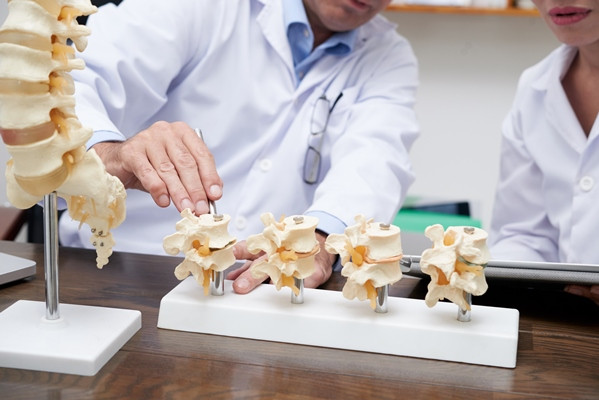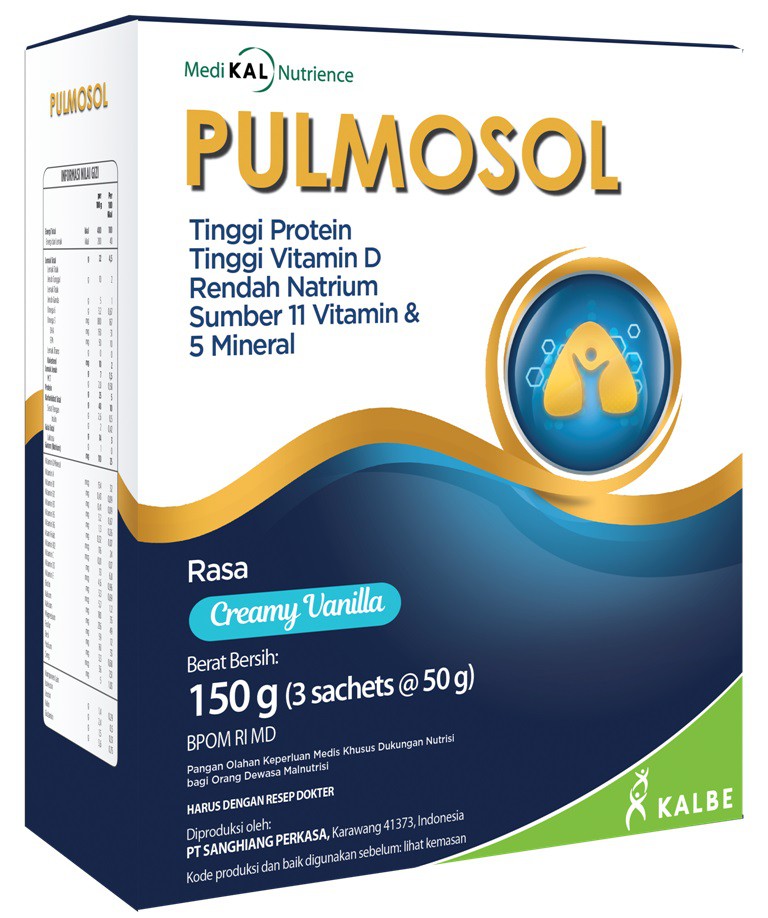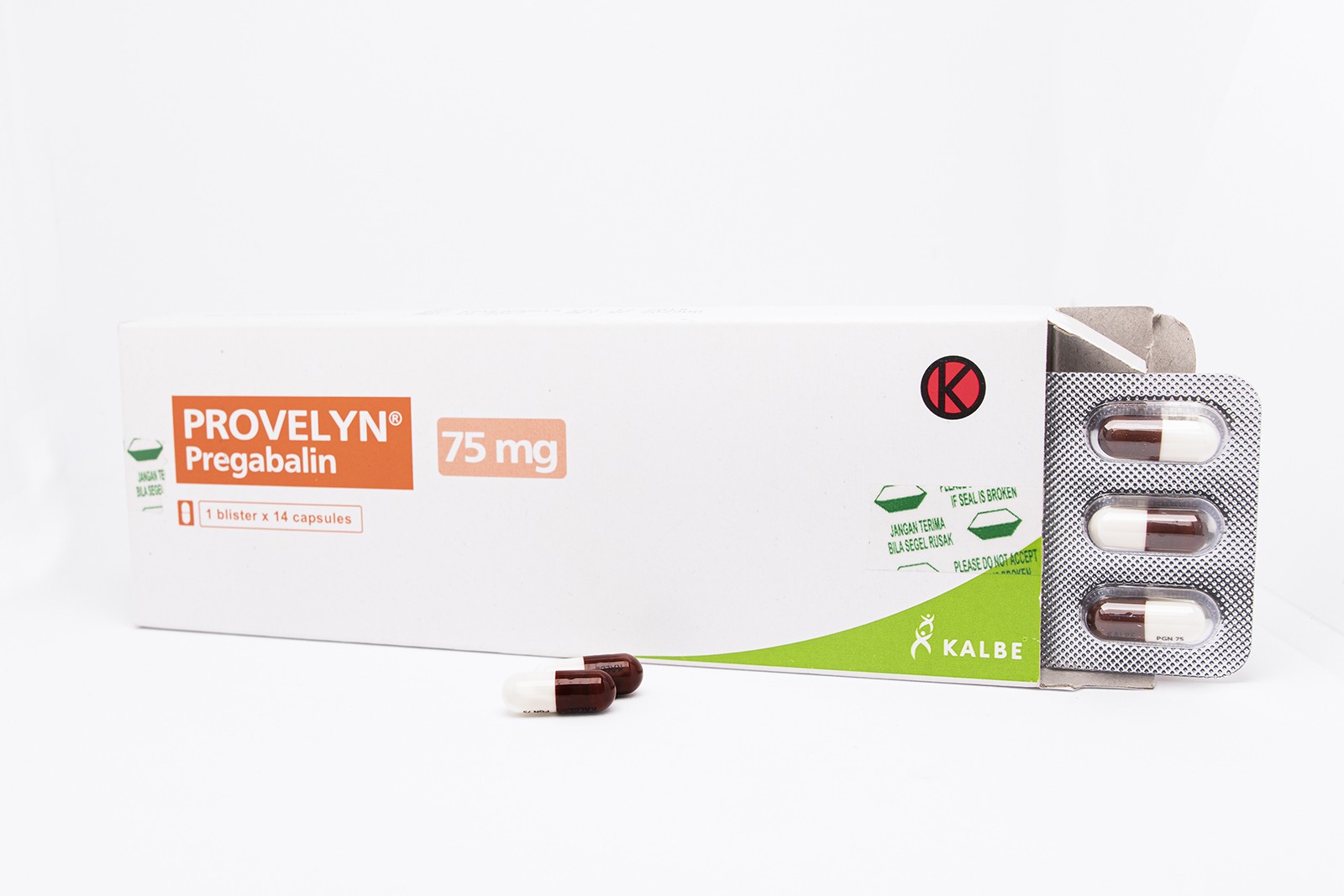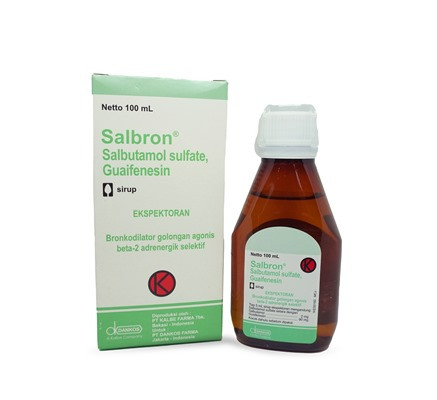Bronchiectasis
Introduction and Facts
Bronchiectasis is a chronic disorder characterized by permanent dilatation of the bronchi, accompanied by an inflammatory process in the walls of the bronchi and the surrounding lung parenchyma. The primary clinical manifestation of bronchiectasis is the occurrence of recurrent, chronic, or refractory infections, with sequelae that occur are coughing up blood, chronic airway obstruction, and progressive breathing problems.
The prevalence of bronchiectasis is reported to be increasing in the United States. Seitz et al reported that the prevalence of bronchiectasis increased every year from 2000 to 2007 with an increase of 8.74%, with a peak age of 80-84 years, more common in women, and Asian races.
Pathophysiology
There are several pathways that explain the occurrence of bronchiectasis. Broadly speaking, bronchiectasis can occur in connection with incidental events or episodes that are not related to the intrinsic basic condition of the patient's body defense, it can also be related to the genetic constitutional basis of the patient. The difference between the two mechanisms above is an important element that determines the prognosis and management of the patient. The basic thing that needs to be understood in the pathogenesis of bronchiectasis is whether the infection in question is a cause of bronchiectasis or the infection in the patient is related to an underlying predisposing condition.
Inspired air is often contaminated with toxic gases, particles, and microbes. The first line of defense of the lungs is formed by the complex shape of the upper and lower airways which forms a highly turbulent airflow. The distinctive shape of the airways allows impaction, sedimentation, and deposition of particles and microorganisms into the airway mucosa. Particles and microorganisms deposited on the mucosa will then be removed through the mechanism of mucociliary movement or directly removed from the respiratory tract through the mechanism of sneezing, coughing, or swallowing. The airways are lined with ciliated epithelium, where the structure and function of these cilia have been extensively studied. Cilia function and mucociliary movement also depend on the low viscosity of the periciliary fluid layer, the fluid layer being hydrated enough to allow good separation between the epithelium and the viscous-mucous layer lining the cilia. When the periciliary layer is uneven (as in cystic fibrosis), the thin periciliary layer can cause the cilia to become entangled in the mucus layer, causing impaired mucus-pushing motion.
The pathogenesis is related to a combination of repeated inflammation of the bronchial wall and parenchymal fibrosis, resulting in a weakened bronchial wall and continued irreversible dilatation. The most common types of inflammatory cells found in bronchiectasis are neutrophils in the airway lumen that cause purulence of sputum, and macrophages, dendritic cells, and lymphocytes in the airway walls. Macrophages, dendritic cells, and lymphocytes are characteristically seen in patients with tubular bronchiectasis and are major causes of small airway obstruction.
The role of neutrophils and neutrophil elastase is very prominent in the pathogenesis of bronchiectasis. Regardless of the primary cause of bronchiectasis, “vicious circle” bronchiectasis is dominated by an influx of neutrophils stimulated by the release of chemokines such as interleukin-8 (IL-8) and leukotriene B4 (LTB4) produced by macrophages, and IL-17 produced by Th17 cells. . Migration of these cells from the bloodstream into the airways is facilitated by increased expression of endothelial cell E-selectin and intercellular adhesion molecule-1, which bind to L-selectin and CD11 on neutrophils, respectively. Neutrophils then enter the airways through the gaps between the epithelial cells. Neutrophils have a relatively short life span and undergo apoptosis and necrosis. PMN proteases such as elastase, cathepsin, matrix metalloproteinase, and proteinase-3 can cause epithelial cell damage and induce further inflammation. In addition to tissue damage, elastase can stimulate mucus hypersecretion, inhibit ciliary function, and inhibit efferocytosis (i.e., phagocytosis of apoptotic neutrophils) by phosphatidylserine (PS) on the surface of apoptotic cells, preventing binding of PS receptors (PSRs) on macrophage surfaces. Elastase also inhibits bacterial killing by inhibiting bacterial opsonization through the degradation of opsonins immunoglobulin G (IgG), complement component iC3b and cleavage of Fcγ receptors (FcγRs) and complement receptors (CR) 1.
Etiology
Historically, the most common cause of bronchiectasis was thought to be an antecedent respiratory infection, often during childhood. The causes are idiopathic, acquired, or infection-related.
Bacterial Infections
- Mycobacterium: Tuberculosis and atypical
- Haemophilus influenzae
- Pseudomonas aeruginosa
- Staphylococcus aureus
- Mycoplasma and HIV
Viral Infections
- Respiratory syncytial virus
- Measles
Fungal Infections
Bronchial obstruction
- Foreign body
- Mucus plug
- Tumors
- Hilar lymphadenopathy (right middle lobe syndrome: extrinsic compression from postinfectious adenopathy)
Postinflammatory pneumonitis
- Chronic aspiration
- Gastroesophageal reflux disorder
- Chronic sinusitis
- Inhalational injury
Congenital/Genetic
- Cystic fibrosis
- Young syndrome
- Alpha1-antitrypsin deficiency (AAT)
- Mounier-Kuhn syndrome
Inflammatory diseases
- Ulcerative colitis
- Rheumatoid arthritis
- Sjögren syndrome
Pulmonary Diseases
- Asthma
- Bronchomalacia
- Cronic-obstructive pulmonary disease (COPD)
- Diffuse panbronchiolitis
- Idiopathic pulmonary fibrosis (traction bronchiectasis)
Altered immune response
- Allergic Bronchopulmonary Aspergillosis
- Hypersensitivity pneumonitis
Clinical Symptoms and Complications
The clinical picture of bronchiectasis is highly variable, some patients have no symptoms at all or symptoms are only felt during exacerbations, and some patients experience symptoms every day. Bronchiectasis should be suspected in any patient with a chronic cough with sputum production or recurrent respiratory infections. Hemoptysis, chest pain, weight loss, bronchospasm, shortness of breath and decreased physical ability are also seen in bronchiectasis patients. Sputum can vary from mucoid, mucopurulent, viscous, and tough. The appearance of 3 layers of sputum which includes a foamy upper layer, a middle layer of mucus, and a purulent lower layer is pathognomonic, but not always present. Cough with blood spots may be caused by airway erosion associated with acute infection. Pleuritic chest pain is present in some patients and suggests a distension of the peripheral airways or distal pneumonitis adjacent to the visceral pleura. In the past, clubbing was a clinical sign frequently associated with bronchiectasis, but studies have shown its prevalence to be only 3%. Shortness of breath and wheezing are found in 75% of patients, so they are often confused with the clinical symptoms of COPD
An exacerbation occurs when 4 or more of the following symptoms are present: Cough with increased phlegm, increased shortness of breath, increased body temperature > 38˚C, increased wheezing, decreased physical ability, fatigue, decreased lung function, and radiological signs of acute infection.
Diagnosis
Another diagnostic aspect to consider is the clinical signs and symptoms of an underlying disease such as cystic fibrosis, immune deficiency, or connective tissue disease.
Blood Check
Routine blood tests, although non-specific, are very important to monitor each individual. Hemoglobin levels may be low due to anemia in chronic disease, and polycythemia may occur as a result of chronic hypoxia. An increase in white blood cells indicates the presence of an acute infection. The state of lymphopenia is the initial suspicion for immunodeficiency testing. Eosinophilia can be found in (albeit nonspecifically) allergic bronchopulmonary aspergillosis. CRP is an acute phase protein that is frequently examined in patients with acute exacerbations of respiratory disease to determine the presence or absence of a systemic inflammatory response. In patients with stable bronchiectasis, CRP levels are above normal values.
Radiological Examination
The diagnosis of bronchiectasis can be established by radiological examination, with the gold standard using HRCT. On chest X-ray bronchiectasis can be seen with tram track images, parallel line density, ring-shaped density, and tubular structure images; these features reflect the abnormally thickened and dilated bronchial walls. The ring shadow can be vaguely 5 mm in size with clear formation of cysts. The appearance of tubular opacities that form branches according to the shape of the bronchial branches can be seen as a result of the bronchi being filled with mucous fluid. Vascular features may be less visible as a result of peribronchial fibrosis. Signs of exacerbation/complications such as density patches associated with mucoid impaction and consolidation, volume loss related to bronchial obstruction by secretions or chronic cicatrization are also frequently seen. The more diffuse the bronchiectasis picture will show the picture of hyperinflation and oligemia in line with severe small airway obstruction. Chest X-ray plays a role in the initial suspicion of bronchiectasis, follow-up in the management of bronchiectasis, and the management of exacerbations.
Bronchial dilatation, which is a cardinal sign of bronchiectasis, on HRCT can be identified by the presence of a bronchoarterial ratio > 1 (BAR > 1), lack of bronchial tapering, and visible airways up to 1 cm from the pleural surface or adjacent to the mediastinal pleural surface. The bronchoarterial ratio is the ratio of the bronchial diameter to the diameter of the adjoining arteries, a ratio > 1 is abnormal and is known as the signet ring sign.
Lung Function Check
Spirometry examination may show a restricted airway with decreased FEV1 and decreased FEV1/FVC ratio, but in some patients spirometry is normal. FVC may be normal or slightly decreased indicating a mucus impaction. Bronchial hyperactivity has also been reported in patients with bronchiectasis. FEV1 correlated with the severity of abnormalities on HRCT. A decrease in lung volume indicates interstitial lung disease as the underlying disease, whereas an increase in lung volume indicates an air trapping or mucus impaction in the small airways. Examination of the 6 minute walking test is done to see the functional capacity of the lungs and can be applied to bronchiectasis. Decreased exercise capacity correlated with severity on HRCT.
Microbiological Examination
Sputum microbiological examination is a very important examination in the treatment of bronchiectasis. Research conducted at 4 health centers specializing in bronchiectasis (in Hong Kong; Tyler, Texas; Barcelona, Spain; and Cambridge, England) found that H influenzae was the most frequently isolated pathogen (that is, 29% to 42% of cases). Other commonly identified pathogens include Staphylococcus aureus, Moraxella catarrhalis, and Pseudomonas aeruginosa. These pathogens have the ability to inhibit mucociliary clearance, damage the respiratory epithelium, and form biofilms that can facilitate persistent infection through the mechanism of inhibition of innate immunity and increase antibiotic resistance.
Specific Inspection
Specific tests are carried out to diagnose certain specific disorders according to the supporting clinical picture. Some of these examinations include: (1) On suspicion of cystic fibrosis, chloride ion (Cl-) concentrations are examined using pilocarpine ionthophoresis. Chloride ion level > 60 mM confirms the diagnosis of cystic fibrosis. (2) Patients with disorders of humoral immunity can be checked for levels of immunoglobulins in the blood, including IgM, IgG, and IgA. (3) The diagnosis of Primary ciliary dyskinesia (PCD) was based on exhaled nitric oxide levels and examination of nasal biopsy specimens using electron microscopy. Low nitric oxide levels are of diagnostic value for PCD, and the diagnosis is confirmed by the presence of a defect in the dynein arms cilia on examination by electron microscopy. (5) IgE levels exceeding 1000 IU are a specific marker for allergic bronchopumonary aspergillosis. (6) Examination of serum 1-antitrypsin levels and genetic testing to diagnose 1-2antitrypsin deficiency bronchiectasis.
Management and Care
Management of bronchiectasis Management of bronchiectasis includes: identification of acute exacerbations and use of antibiotics, control of microbial growth, treatment of the underlying condition, reduction of excessive inflammatory response, improvement of bronchial hygiene, control of bronchial bleeding, surgical therapy to remove damaged lung segments or lobes which can be a source of infection or bleeding.
Antibiotics
Antibiotics have a crucial role in the management of bronchiectasis, antibiotics can inhibit the vicious cycle of infection, inflammation, and airway epithelial damage. The use of antibiotics is needed as therapy during exacerbations or as long-term therapy. Early use of antibiotics in exacerbations can limit the vicious circle. Antibiotics have been reported to reduce CRP levels, inflammatory cells in sputum, sputum volume, sputum purulence and bacterial density. Patients with purulent sputum after administration of antibiotics have a shorter time for subsequent exacerbations compared to patients with mucoid sputum. Clinical data show that giving high doses of antibiotics and longer periods of time gives better results, this is due to the difficulty of achieving sufficient concentrations of antibiotics into the bronchiectasis lumen, bacteria that are often resistant, and the presence of a biofilm that 'protects' the bacteria. The duration of antibiotic therapy is still being debated, however, the British Thoracic Society guidelines for non-CF Bronchiectasis 2010 stated that in exacerbation conditions, antibiotics were given for 14 days.
Bronchopulmonary Hygiene
Management of bronchiectasis also involves efforts to remove airway secretions. Efforts that can be made include effective coughing exercises, postural drainage, chest physiotherapy, thinning airway secretions, and administering bronchodilators and inhaled corticosteroids during acute exacerbations. Patients with thick secretions and mucous pluging can be assisted with nebulized saline and maintain adequate systemic hydration.
Surgical Management
Surgical resection of bronchiectasis is only carried out with special considerations, including in patients with localized disorders who fail medical therapy and suffer from clinical symptoms that worsen the patient's quality of life. The basic concept of surgical procedures in bronchiectasis is to remove damaged areas of the lung parenchyma that prevent antibiotic penetration from working properly. Damaged lung tissue becomes a reservoir for bacteria that cause repeated infections. Several factors that affect the success of surgery include: complete resection of the involved area, early intervention to prevent the development of resistant microbes and spread to adjacent lung segments, preoperative antibiotic therapy according to culture and sensitivity, continued antibiotic therapy after surgery, improvement in supplementation. preoperative nutrition as indicated, anticipation of complications that may occur.
References:
- Hariyanto W, Hasan H. Bronkiektasis. Jurnal Respirasi 2016:2:2: 52- 60
- Bird J, Memon J. Bronchiectasis [Internet]. 2023. Available from: https://www.ncbi.nlm.nih.gov/books/NBK430810/

























